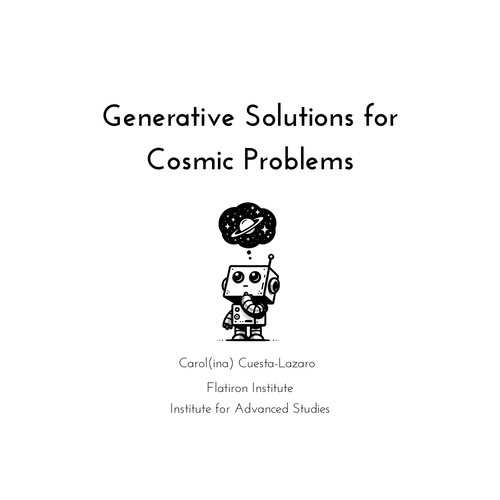Generative Solutions for Cosmic Problems
Flatiron Institute
Institute for Advanced Studies
Carol(ina) Cuesta-Lazaro

["Genie 2: A large-scale foundation model" Parker-Holder et al (2024)]

["Generative AI for designing and validating easily synthesizable and structurally novel antibiotics" Swanson et al]
Probabilistic ML has made high dimensional inference tractable
1024x1024xTime
["Genie 3: A new frontier for world models" Parker-Holder et al (2025)]
Carolina Cuesta-Lazaro Flatiron/IAS - Astro Seminar

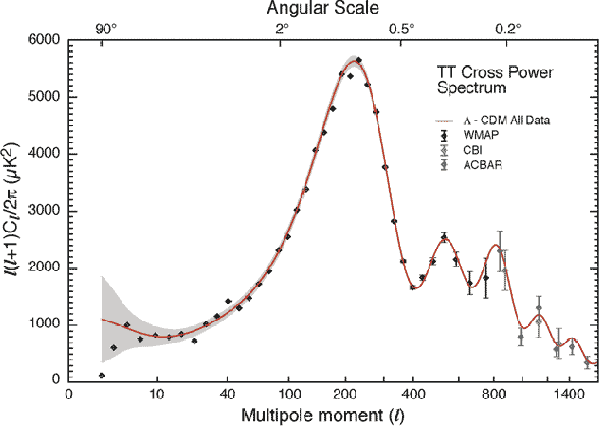
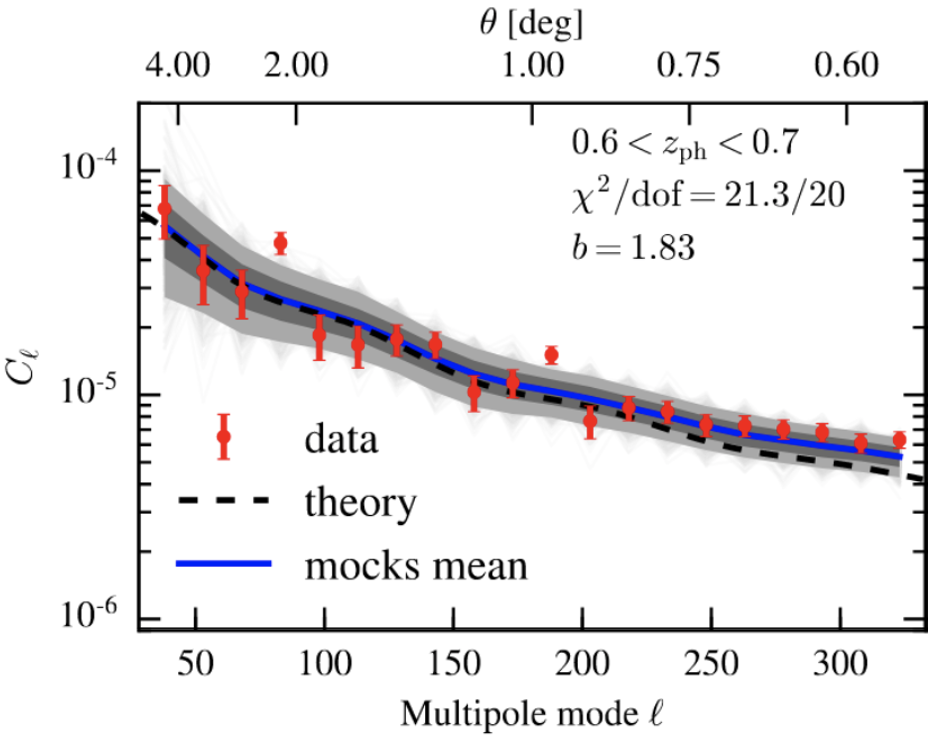
1-Dimensional


Machine Learning
Secondary anisotropies
Galaxy formation
Intrinsic alignments



DESI / SphereX / Hetdex
Euclid / LSST
SO / CMB-S4
Ligo / Einstein


The era of Big Data Cosmology
xAstrophysics
HERA / CHIME
SAGA / MANGA




Galaxy formation
Emitters Census
Reionization


Cosmic Microwave Background
Galaxies / Dwarfs
21 cm
Galaxy Surveys
Gravitational Lensing
Gravitational Waves
AGN Feedback/Supernovae


Carolina Cuesta-Lazaro Flatiron/IAS - Astro Seminar
Field-Level Inference and Emulators
Robust Simulation-based inference
Generating Fields
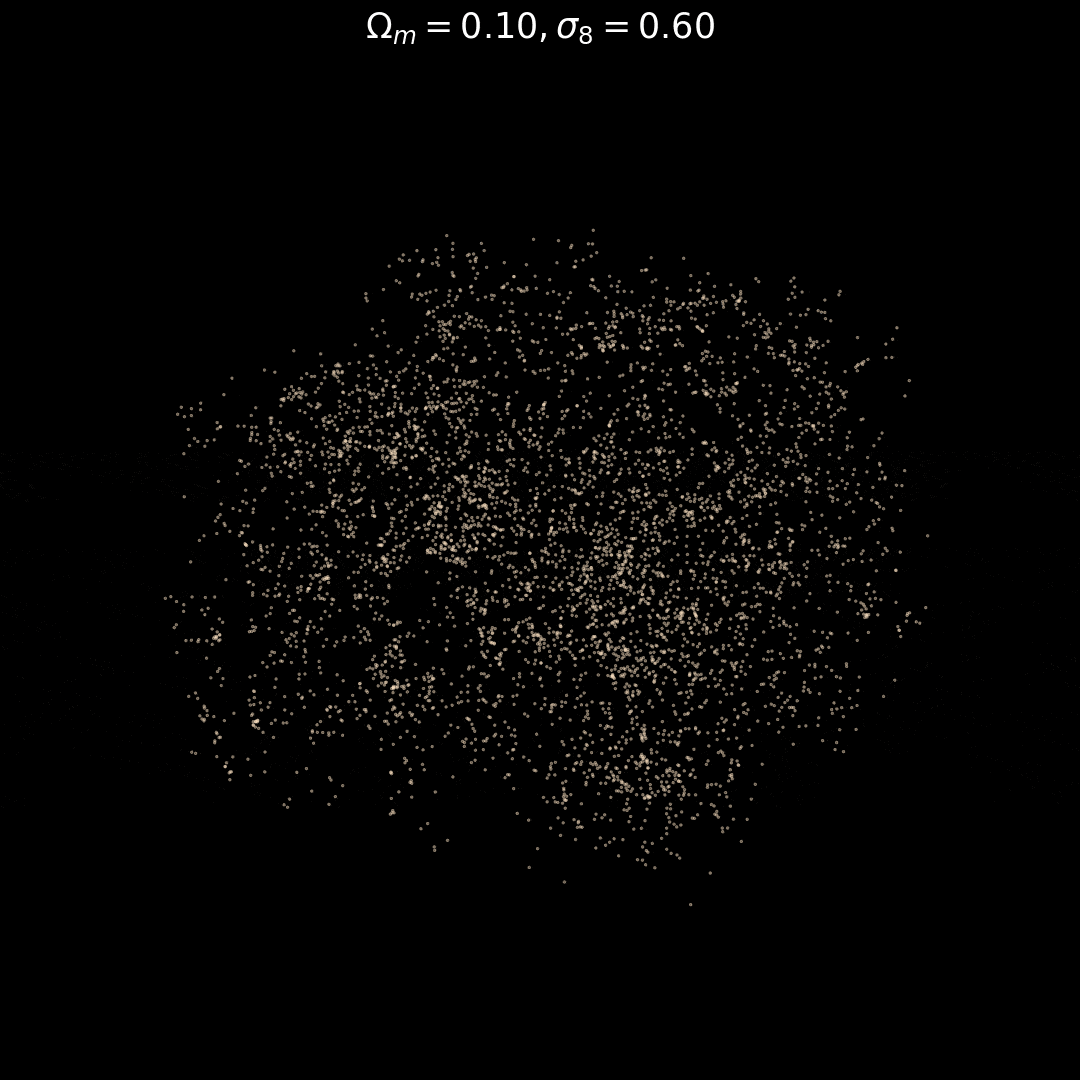
Generating Representations
Disentangling systematics from physics latent spaces
Carolina Cuesta-Lazaro Flatiron/IAS - Astro Seminar

What is field-level inference?
A digital twin of our Universe

Observed Galaxy Distribution
Simulated Galaxy Distribution

Field Level Inference
Forward Model
(= no Cosmic Variance)




Carolina Cuesta-Lazaro Flatiron/IAS - Astro Seminar
Why field-level inference?
Optimal constraints
Counts-in-cell
Do we really need to infer 10^9 parameters to constrain ~10?

Carolina Cuesta-Lazaro Flatiron/IAS - Astro Seminar


Compression
Marginal Likelihood
Explicit Likelihood
Implicit Likelihood
Initial Conditions
Carolina Cuesta-Lazaro Flatiron/IAS - Astro Seminar
Generative Models 101
Maximize the likelihood of the training samples
Parametric Model


Training Samples
Carolina Cuesta-Lazaro Flatiron/IAS - Astro Seminar
Trained Model

Evaluate probabilities


Low Probability
High Probability

Generate Novel Samples


Simulator
Generative Model
Fast emulators
Inference
Generative Model
Simulator
Generative Models: Simulate and Analyze
Carolina Cuesta-Lazaro Flatiron/IAS - Astro Seminar
Bridging two distributions

Base
Data
"Creating noise from data is easy;
creating data from noise is generative modeling."
Yang Song
Neural Network
6 seconds / sim vs 40 million CPU hours
Fast Emulation





Density Fields
Carolina Cuesta-Lazaro Flatiron/IAS - Astro Seminar
Marginal Likelihoods:
arXiv:2405.05255
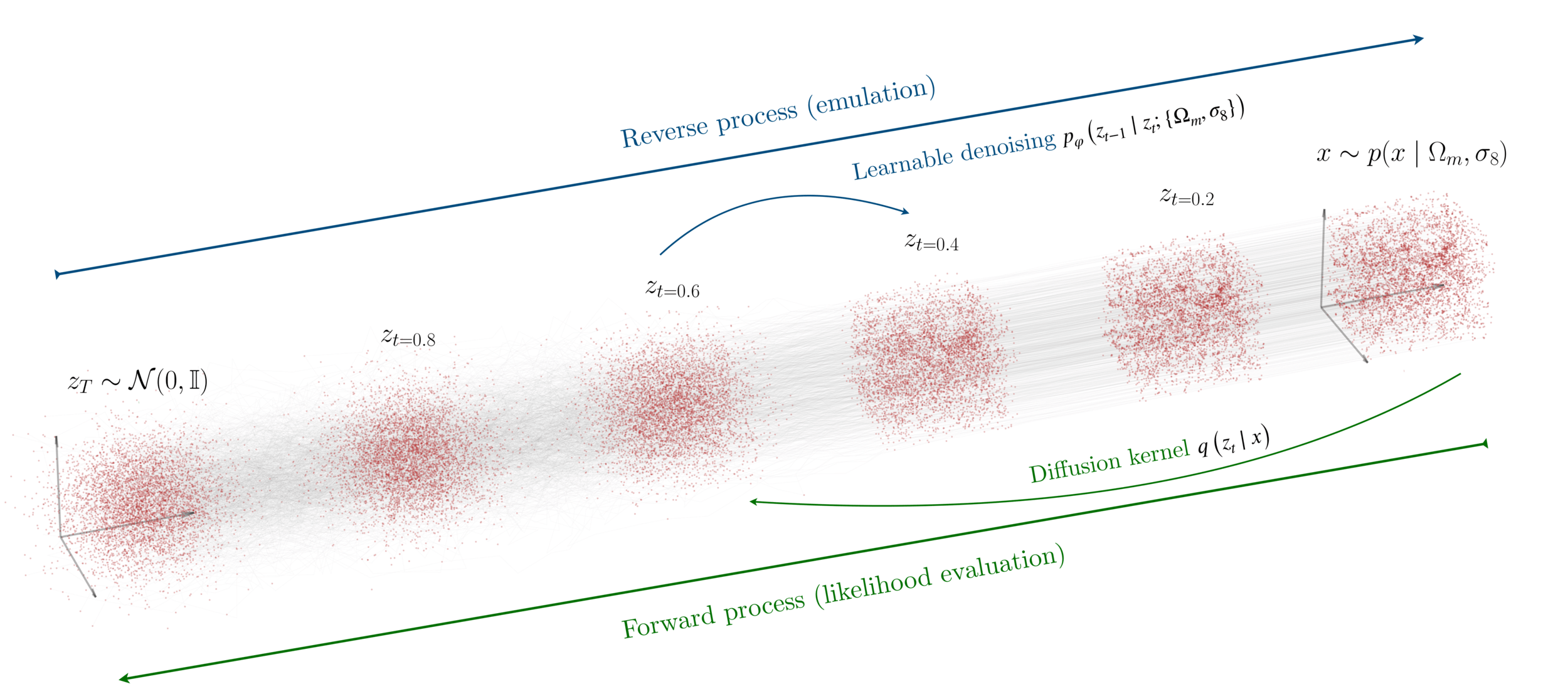
Point Clouds
arXiv:2311.17141

Carolina Cuesta-Lazaro Flatiron/IAS - Astro Seminar
Marginal Posteriors:

1) Sampling the Neural Likelihood (NLE) with HMC
2) Directly an optimal compression: Neural Posterior (NPE)
Learned Likelihood
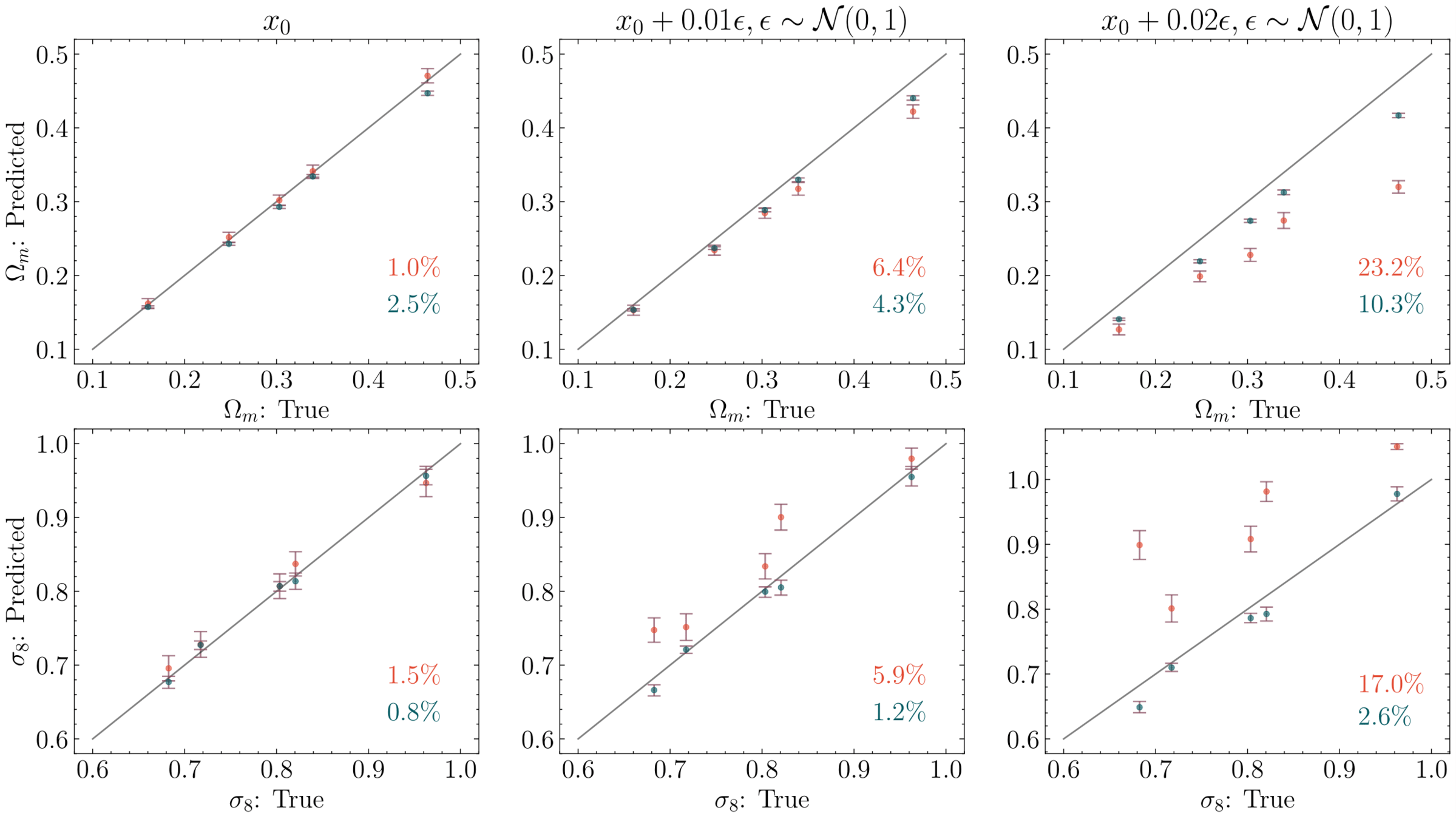
CNN
Diffusion
Increasing Noise
["Diffusion-HMC: Parameter Inference with Diffusion Model driven Hamiltonian Monte Carlo" Mudur, Cuesta-Lazaro and Finkbeiner NeurIPs 2023 ML for the physical sciences, arXiv:2405.05255]

Nayantara Mudur


Posterior (NPE)
Likelihood (NLE)
Learning the marginal likelihood is more robust
Learned Likelihood
Carolina Cuesta-Lazaro Flatiron/IAS - Astro Seminar






Reconstructing ALL latent variables:
Dark Matter distribution
Entire formation history
Peculiar velocities
Predictive Cross Validation:
Cross-Correlation with other probes without Cosmic Variance

[Image Credit: Yuuki Omori]
Constraining Inflation:
Inferring primordial non-gaussianity
Why field-level inference?
Data-driven Subgrid models / Data-driven Systematics
Carolina Cuesta-Lazaro Flatiron/IAS - Astro Seminar
Carolina Cuesta-Lazaro Flatiron/IAS - Astro Seminar
"Joint cosmological parameter inference and initial condition reconstruction with Stochastic Interpolants"
Cuesta-Lazaro, Bayer, Albergo et al
NeurIPs ML4PS 2024 Spotlight talk

Particle Mesh
Dark Matter Only
Gaussian Likelihood
Explicit Sampling vs SBI

1) Likelihood not necessarily Gaussian
2) Forward model no need differentiable
3) Amortized
Carolina Cuesta-Lazaro Flatiron/IAS - Astro Seminar
Generative Model: Marginalizing over ICs
Generative Model: Fixing ICs
HMC: Marginalizing over ICs

True
Reconstructed

Carolina Cuesta-Lazaro Flatiron/IAS - FLI


Initial Conditions
Finals

Carolina Cuesta-Lazaro Flatiron/IAS - Astro Seminar
HMC (ICs)
SBI (ICs)
SBI (Finals)
HMC (Finals)
HMC (ICs)
SBI (ICs)
SBI (Finals)
HMC (Finals)
HMC (ICs)
SBI (ICs)
SBI (Finals)
HMC (Finals)

Carolina Cuesta-Lazaro Flatiron/IAS - Astro Seminar
SBI
HMC
Scaling up in volume
Carolina Cuesta-Lazaro Flatiron/IAS - Astro Seminar
Implicit FLI for DESI
DESI Y1 LRG Effective volumes already larger than our sims!
Small Scale Galaxy Bias

How galaxies are selected
Fibre collisions
Forward Modelling the Survey Systematics



EFT
Galaxy Formation

Self-Consistent Predictions across observables
Carolina Cuesta-Lazaro Flatiron/IAS - Astro Seminar
arXiv:1804.03097

X-Ray
Cluster gas mass fractions
Cluster gas density profiles
Sunyaev-Zeldovich
Galaxy Properties
Thermal Integrated electron pressure (hot electrons / big objects)
Star formation + histories
Stellar mass / halo mass relation
FRBs
Integrated electron density

Kinetic Integrated electron density x peculiar velocity
Carolina Cuesta-Lazaro Flatiron/IAS - Astro Seminar
Multi-wavelength Observables
["BaryonBridge: Interpolants models for fast hydrodynamical simulations" Horowitz, Cuesta-Lazaro, Yehia ML4Astro workshop 2025]
Particle Mesh for Gravity
CAMELS Volumes
1000 boxes with varying cosmology and feedback models

Gas Properties

Current model optimised for Lyman Alpha forest
7 GPU minutes for a 50 Mpc simulation
130 million CPU core hours for TNG50
Density
Temperature
Galaxy Distribution

Carolina Cuesta-Lazaro Flatiron/IAS - Astro Seminar
Hydro At Scale
[Video credit: Francisco Villaescusa-Navarro]
Gas density
Gas temperature
Subgrid model 1
Subgrid model 2
Subgrid model 3
Subgrid model 4
Carolina Cuesta-Lazaro Flatiron/IAS - Astro Seminar
Can we learn a general and continuous representation of Baryonic feedback?

Gas
Galaxies
Carolina Cuesta-Lazaro Flatiron/IAS - Astro Seminar

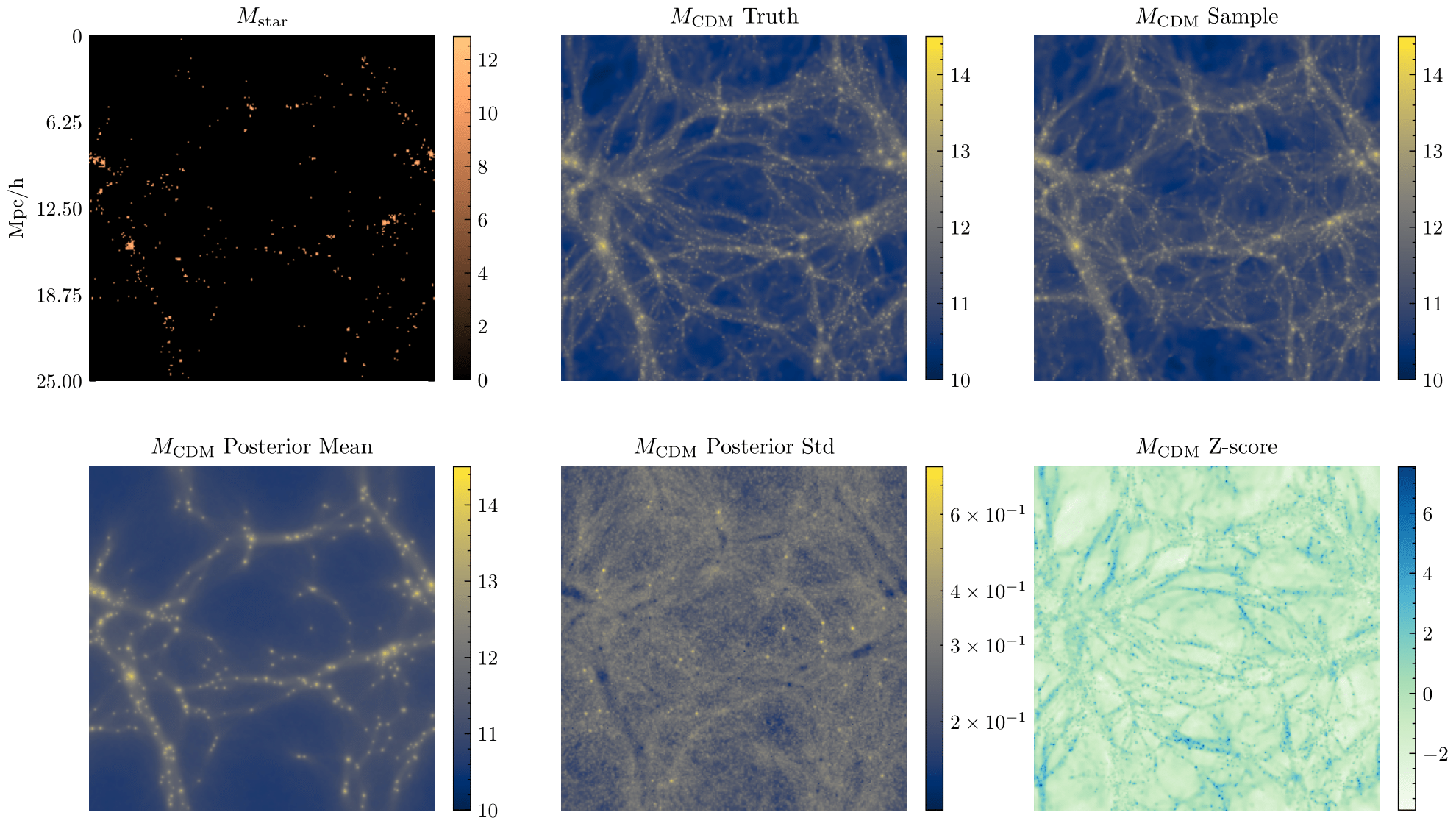


Dark Matter
Baryonic fields
Marginalize over a broader set of subgrid physics
Interpolate between simulators
Mingshau Liu
(Ming)

Constrain z via multi-wavelength observations
Carolina Cuesta-Lazaro Flatiron/IAS - Astro Seminar

Trained on:
TNG, SIMBA, Astrid, EAGLE
Encoder



1) Encoder

Gas
Galaxies




Dark Matter
Baryonic fields
2) Probabilistic Decoder



Dark Matter
Baryonic fields
Carolina Cuesta-Lazaro Flatiron/IAS - FLI
(Test suite)

Gas Density
Temperature
Astrid
EAGLE
Carolina Cuesta-Lazaro - IAS Astro Seminar
Interpolating over Simulations
Generalizing to unseen simulations: Magneticum
Carolina Cuesta-Lazaro - IAS Astro Seminar













Astrophysics proliferates Simulation-based Inference
on Simulations
Carolina Cuesta-Lazaro - IAS Astro Seminar
Simulated Data
Observed Data
Alignment Loss
Reconstruction
Statistical Alignment
(OT / Adversarial)
Carolina Cuesta-Lazaro - IAS Astro Seminar


Encoder
Obs
Encoder
Sims
Private Domain Information
Shared Information


Observed Reconstructed
Simulated Reconstructed
Shared Decoder
Shared Decoder

A Toy Model Example


Idealized Simulations
Observations
+ Scale Dependent Noise
+ Bump
Carolina Cuesta-Lazaro - IAS Astro Seminar

Amplitude
Tilt
Tilt
Robust SBI from Shared

Visualizing Information Split
Carolina Cuesta-Lazaro - IAS Astro Seminar

Carolina Cuesta-Lazaro - IAS Astro Seminar
Anomaly Detection in Astrophysics
arXiv:2503.15312
Carolina Cuesta-Lazaro - IAS Astro Seminar
Can we separate Systematics from Physics?


Pablo Mercader

Daniel Muthukrishna

Jeroen Audenaert
Legacy Survey

HSC
DESI
SDSS
Same Object / Different Instrument
Different Object / Same Instrument
Carolina Cuesta-Lazaro - IAS Astro Seminar
Object 1


Object 2

Object 1
Back to the Playground!
Orientation + Scale
Number



Instrument 1
Instrument 1
Instrument 2
Instrument Encoder
Object Encoder
Instrument Pair
Object Pair
Instrument Pair
Object Pair

Carolina Cuesta-Lazaro - IAS Astro Seminar




Ground Truth
Instrument Pair
Object Pair
Recon
2. We can scale hydrodynamical simulation in volume for the analysis of LSS surveys
Conclusions

Can we leverage multi-wavelength observations?
3. Playing with the latent space will help us learn robustly
1. Cosmological field level inference can be made scalable with generative models
Can EFT help us scale in volume?

Can generally make simulators more controllable!
Carolina Cuesta-Lazaro - IAS Astro Seminar
Is resolution too low?

Private-Shared Information Split
Disentangling systematics
Observation
Question
Hypothesis
Testable Predictions
Gather data
Alter, Expand, Reject Hypothesis
Develop General Theories
[Figure adapted from ArchonMagnus] Simulators as theory models
The Scientific Method in 2025
High-dimensional data
["An LLM-driven framework for cosmological
model-building and exploration" Mudur, Cuesta-Lazaro, Toomey (in prep)]

Can LLMs turn these anomalies into new hypothesis?
Propose a model for Dark Energy
Implement it in a Cosmology simulation code: CLASS
Test fit to DESI Observations
Iterate to improve fit
Quintessence, DE/DM interactions....
Must pass a set of general tests for "reasonable" models
Ideally, compare evidence to LCDM.
For now, Bayesian Information Criteria (BIC)
1
2

Nayantara Mudur (Harvard)
Carolina Cuesta-Lazaro - IAS Astro Seminar
Can LLMs implement new physics models?
Thawing Quintessence
Axion-like Early Dark Energy
Ultra-light scalar field that temporarily acts as dark energy in the early universe
Implementation Challenge:
Dynamic dark energy model: scalar field transitions from "frozen" (cosmological constant-like) to evolving as the universe expands.
Oscillatory behaviour
Can take advantage of existing scalar field implementations in CLASS
+ 43,000 lines of C code
+ 10,000 lines of numerical files
CLASS Challenge:
Carolina Cuesta-Lazaro - IAS Astro Seminar

1) Code compiles + obtains reasonable observables
2) Implementation agrees with target repository
3) Goodness of fit for DESI + Supernovae
4) H0 tension metrics
Curated
1 page long description of model to be implemented, CLASS tips + very explicit units
Paper
Directly from a full paper
If fails, get feedback from another LLM
Carolina Cuesta-Lazaro - IAS Astro Seminar
Propose a Dark Energy Model

Shortcut: field that produces this?
Carolina Cuesta-Lazaro - IAS Astro Seminar

Propose a Dark Energy Model
Asked for physical motivation. It tried :(
Not true, preferred scale
Carolina Cuesta-Lazaro - IAS Astro Seminar
Reinforcement Learning
How to iterate
Update the base model weights to optimize a scalar reward (s)

DeepSeek R1
Base LLM
(being updated)
What rewards are more advantageous?
Base LLM
(frozen)
Develop basic skills: numerics, theoretical physics, UNIT CONVERSION
Community Effort!
Carolina Cuesta-Lazaro - IAS Astro Seminar
Evolutionary algorithms
Learning in natural language, reflect on traces and results
Examples: EvoPrompt, FunSearch,AlphaEvolve

How to iterate
Carolina Cuesta-Lazaro - IAS Astro Seminar
["GEPA: Reflective prompt evolution can outperform reinforcement learning" Agrawal et al]
GEPA: Evolutionary
GRPO: RL
+10% improvement over RL with x35 less rollouts
Scientific reasoning with LLMs still in its infancy!
Carolina Cuesta-Lazaro - IAS Astro Seminar
Observation
Question
Hypothesis
Testable Predictions
Gather data
Alter, Expand, Reject Hypothesis
Develop General Theories
[Figure adapted from ArchonMagnus] The Scientific Method in > 2025
Carolina Cuesta-Lazaro - IAS Astro Seminar
IAS-Seminar-2025
By carol cuesta
IAS-Seminar-2025
- 123



